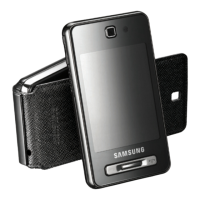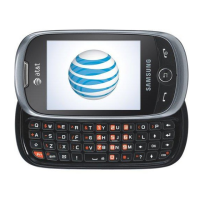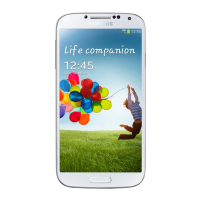Do you have a question about the Samsung SGH-F210 and is the answer not in the manual?
Do not use a hand-held phone while driving. Park your vehicle first.
Do not use the phone at a refuelling point or near fuels or chemicals.
Wireless phones can cause interference. Using them in an aircraft is illegal and dangerous.
Hospitals or health care facilities may use equipment sensitive to external radio frequency energy.
Follow special regulations. Use phone sensibly and keep away from children.
Key in the emergency number for your present location, then press the call key.
Use the camera module to take photos or record videos.
Transfer music files to your phone directly from Windows Media Player.
Play music files using your phone as a music player.
Transfer media files and personal data using wireless Bluetooth technology.
Access the wireless web for up-to-date information and media content.
Configure phone settings like display, sound, network, and security.
Making or answering calls, and retrieving call history.
How to select options using soft keys, navigation keys, and confirmation.
Setting a 4- to 8-digit password to protect your phone.
Instructions for making and answering calls, including volume adjustment.
Composing and sending text messages, including destination numbers.
Creating and sending multimedia messages with subject, image, sound, or text.
Turning on Bluetooth and setting phone visibility for other devices.
Searching for and pairing with a Bluetooth device, including PIN entry.
Creating/sending messages, accessing received/sent messages, using templates.
Activating/changing PIN and PIN2 codes for SIM card security.
Activating phone password to protect against unauthorized use.
Details on the phone meeting EU requirements for radio wave exposure and SAR limits.
Guidelines on using chargers, intended purpose, and effects of network proximity on battery.
Information on battery charging time, lifespan, and when to buy a new battery.
Precautions for unused batteries, using approved batteries and chargers.
Avoid long charging periods and extreme temperatures for battery longevity.
Warning against short-circuiting battery terminals to prevent damage.
Prioritize driving. Follow local regulations when using the phone while driving.
Follow special regulations, switch off phone when forbidden or causing interference/danger.
Maintain minimum distance between phone and pacemaker to avoid interference.
Digital phones may interfere with hearing aids; consult manufacturer for alternatives.
Consult device manufacturer and physician regarding RF energy shielding for medical devices.
Switch off phone in facilities where posted notices require it.
Switch off phone in areas with potentially explosive atmosphere, obey signs and instructions.
Steps to make an emergency call: switch on, key number, press call key.
Only qualified personnel for vehicle installation and service. Check equipment regularly.
Do not store flammables. Be aware of airbag deployment areas for objects.
Switch off phone before boarding aircraft; illegal and dangerous to use them.
Keep phone dry. Avoid using with wet hands to prevent damage.
Avoid dusty, hot, cold areas, and rough handling to prevent damage.
Do not place phone in or on heating devices like microwave ovens, stoves, or radiators.
Water damage indicator. Do not use flash close to eyes of people or animals.
| Announced | 2007, February |
|---|---|
| Status | Discontinued |
| Network | GSM 900 / 1800 / 1900 |
| GPRS | Class 10 |
| EDGE | Class 10 |
| SIM | Mini-SIM |
| Type | TFT, 256K colors |
| Card slot | microSD (dedicated slot) |
| Phonebook | 1000 entries |
| Internal | 20 MB |
| Primary | 2 MP |
| Video | Yes |
| Alert types | Vibration; Downloadable polyphonic, MP3 ringtones |
| Loudspeaker | Yes |
| 3.5mm jack | No |
| Messaging | SMS, MMS, Email |
| Browser | WAP 2.0/xHTML |
| Games | Yes |
| Java | Yes, MIDP 2.0 |
| Battery | Removable Li-Ion 800 mAh battery |
| Colors | Black, White |
| Call records | 20 dialed, 20 received, 20 missed calls |
| Bluetooth | v2.0, A2DP |
| Radio | FM radio |
| USB | 2.0 |












